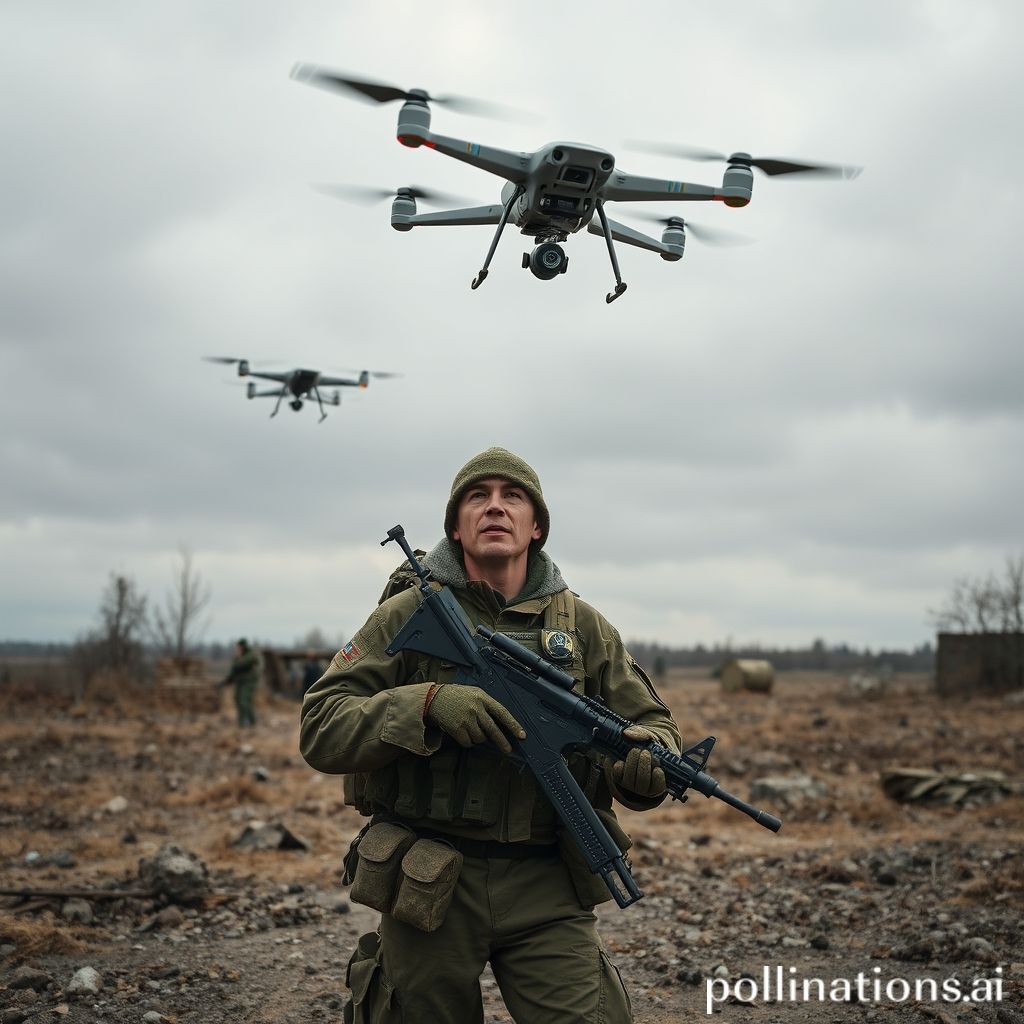The Ukrainian soldier's best chance against Russia's advanced unjammable drones is as low-tech as it gets

Ukraine's Drone War: Sometimes, the Old Ways are the Best Ways
Hey everyone,
In the high-stakes, technologically driven war in Ukraine, we often hear about advanced weaponry, sophisticated cyber warfare, and cutting-edge drone technology. But what if I told you that the Ukrainian soldier's best defense against Russia's increasingly sophisticated (and reportedly "unjammable") drones is something surprisingly low-tech?
Let's dive in.
The Drone Threat: More Than Just Eyes in the Sky
Drones have become absolutely integral to modern warfare, and the conflict in Ukraine is no exception. They are used for reconnaissance, target acquisition, artillery spotting, and even direct attacks. Russia employs a variety of drones, including the Orlan-10 (a reconnaissance workhorse) and more recently, Iranian-made Shahed-136 "kamikaze" drones. These drones present a multifaceted threat:
Constant Surveillance: Drones provide a continuous stream of intelligence, allowing the enemy to track troop movements, identify defensive positions, and anticipate attacks.
Artillery Correction: One of the most dangerous uses of drones is to adjust artillery fire. This drastically improves the accuracy of shelling, leading to increased casualties and destruction.
Targeted Strikes: Kamikaze drones are designed to loiter over a target area and then crash into a specific target, detonating an explosive payload.
The "Unjammable" Myth: Reality vs. Marketing
We've heard claims that certain Russian drones are "unjammable," meaning they are resistant to electronic warfare (EW) techniques designed to disrupt their communication and navigation systems. While Russian EW capabilities are indeed formidable, the term "unjammable" is a bit of a marketing exaggeration. No system is completely immune to countermeasures. The challenge is finding effective and affordable solutions.
Low-Tech Solutions: Back to Basics
So, what are these low-tech methods that are proving effective?
1. Camouflage and Concealment: This is as old as warfare itself. Ukrainian soldiers are employing camouflage netting, natural foliage, and digging into the earth to break up their visual signature. By making it harder for drones to spot them in the first place, they reduce the risk of being targeted.
2. Decoys: Simple decoys, such as mock vehicles or artillery pieces, can draw the attention of drones and even artillery fire, diverting attacks from real targets.
3. Dispersal: Avoiding large concentrations of troops and equipment makes it harder for drones to inflict significant damage with a single strike. Smaller, more dispersed units are harder to find and target.
4. Early Warning Systems (the Human Kind): While radar and electronic detection systems are valuable, sometimes the best early warning comes from human observation. Soldiers on the front lines are trained to listen for the telltale sound of approaching drones and alert their comrades.
Why Low-Tech Works (Sometimes)
You might be wondering why these seemingly basic methods are effective against technologically advanced drones. Here s why:
Cost-Effective: High-tech solutions, like drone jamming systems, are expensive and require specialized training. Low-tech methods are cheap, readily available, and can be implemented quickly.
Resilience: Electronic warfare can be unpredictable. Jammers can malfunction, and drones can adapt to changing frequencies. Camouflage and dispersal, on the other hand, are consistently effective.
Simplicity: In the chaos of battle, simple solutions are often the most reliable. Soldiers don't need to be tech experts to use camouflage or dig a foxhole.
Comparing High-Tech vs Low-Tech
| Feature | High-Tech Solutions (e.g., Jammers) | Low-Tech Solutions (e.g., Camouflage) |
||||
| Cost | Expensive | Inexpensive |
| Complexity | Complex, requires specialized training | Simple, easy to implement |
| Vulnerability | Susceptible to malfunction, adaptation | Resilient, consistently effective |
| Effectiveness | Can be highly effective in specific situations | Provides a baseline level of protection in all situations |
Looking Ahead: A Combined Approach
It's important to note that low-tech solutions aren't a magic bullet. They are most effective when combined with high-tech defenses and smart tactics. Electronic warfare, air defense systems, and counter-battery radar all play a crucial role in neutralizing the drone threat. But the ability to disappear, to blend in, to make yourself a harder target to find these are skills that every soldier needs, regardless of the technology involved.
A Personal Reflection
The war in Ukraine has been a brutal reminder that warfare is a constantly evolving dance between offense and defense. While technology plays an increasingly important role, the fundamentals of survival on the battlefield remain the same: awareness, discipline, and the ability to adapt.
It's inspiring to see how Ukrainian soldiers are using ingenuity and resourcefulness to defend their country. Their willingness to embrace both high-tech and low-tech solutions is a testament to their resilience and determination. Sometimes, the best way to fight the future is to remember the lessons of the past.
Sources:
Various open-source intelligence reports on drone usage in the Ukraine conflict.
News articles and interviews with military analysts.
Reports from organizations monitoring the conflict.

0 Comments:
Post a Comment